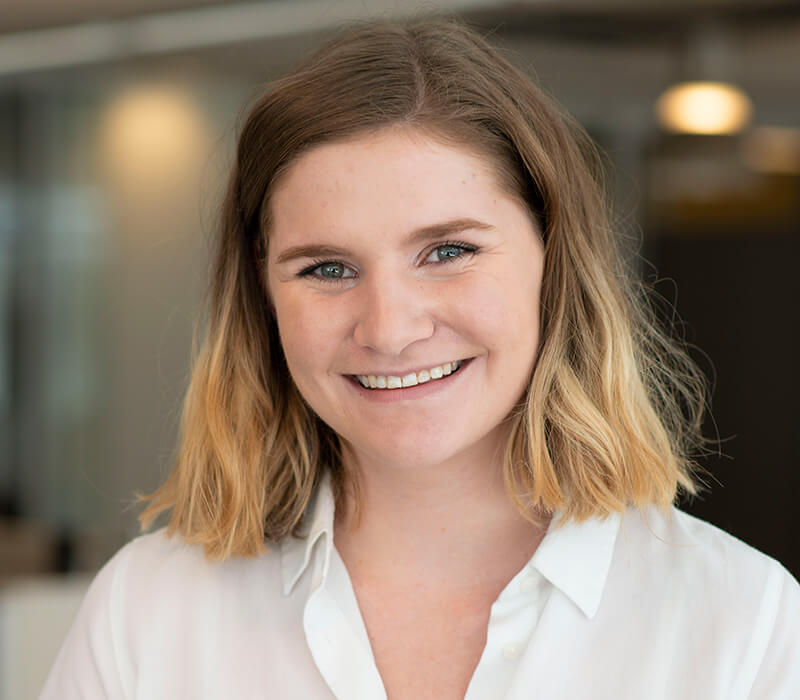 Jodi Williams, AICP, LEED AP ID+C
Jodi Williams, AICP, LEED AP ID+C
Associate Principal; Office Leader, Washington, D.C.
Jodi Williams brings over 20 years of experience in workplace strategy, facility planning and change management. She leads strategic planning efforts for public and private sector clients, leads some of our largest corporate accounts and is a big fan of mission-oriented work. You will find her speaking at conferences, writing articles, playing with her daughter and hanging upside down at aerial yoga.
How have you managed the transition to becoming the Washington, DC office leader in a remote work environment?
One part I am particularly excited about is stepping further into the local market. Historically, I have been more engaged at the national level, but I am looking forward to connecting with the community more. 2020 was obviously a challenging year: all our employees were sent to work from home and, while we have done a pretty good job staying connected on a studio-by-studio basis, we are more siloed as an office. You cannot just have a one-off coffee chat with someone who sits near you anymore.
I want to enable that connection in the office — across studios, practice areas, levels of seniority and levels of experience. We need to know each other to be able to see each other’s unique talents and abilities. The good news is, I know all the 100+ employees in the DC office by name and face, and usually a fact or two — that may seem trivial, but it is very important for me, personally, to have that level of basic connection. I am excited to build my individual relationships in the office even further; we have fun and interesting people with talents beyond your wildest imagination.
How does your workplace design knowledge contribute to your abilities as an office leader?
Regardless of who you are leading, you need to know what they do and what they need first and foremost. This means having an intimate knowledge of our industry — and not just the dollars and cents, either. You need to have respect for the process and be thoughtful about the way that “creatives” work. I think my understanding of the design process — and the design way of thinking, in general — has been a huge benefit to me in this role. You cannot just put a good business leader or project manager into a workplace and expect it to work if they do not understand who they are managing. You do not necessarily have to be an architect, but you do have to “get it.”
As I am not an architect or designer, I need to lean into those who are to build a coalition around that and explore their talents. We are building a “one CRTKL” culture that makes everybody feel included — from shared services like admin and marketing to the senior-most design professionals. There are so many different paths in this firm and we need to value all of those.
How has working remotely influenced your leadership style?
I have a head-start on this because my job includes handling remote client accounts and teams. That head start has allowed me to figure out what works, what does not and how to structure a team to work together remotely and effectively.
Luckily, formal mentoring relationships tend to work well virtually. For as long as I can remember, CRTKL has supported formal and informal cross-office mentoring. That still remains; however, the informal peer-to-peer and design mentoring can be hard to replicate. It is hard to sit down and draw together on a video call, for example. There’s also that basic peer-to-peer stuff of how to operate in a work environment: like how to use a printer and who to contact if it breaks. Sometimes there is a familiarity in-person and an awkward sense of professionalism remotely.
My main priority for the DC office is to maintain the relationships people have developed in the office with people who are not directly on their own teams. Facilitating conversations across levels of seniority and studio/workgroup can create some very meaningful career relationships — especially for our less experienced employees.
What do you miss most about physically being in the office?
I am a people person, so I miss the human connection the most. I want to talk about binge-worthy shows and best recipes, know what your kids are up to, where you got that sweater and where we should grab lunch that is new and different (or tried and true). It is extremely difficult to replicate that informal communication and ease of collaboration when you still need to meet formally for a video meeting. I also miss the fixed schedule of going to the office and the break the commute gives me. That said, I love the ability to take calls at 7 am or 9 pm to connect with colleagues from around the globe, while maybe taking an hour or two off during the day to do some self-care… or the laundry.
I am terribly excited for the opportunity to build and rebuild coalitions and help people navigate their lives at work. As a late GenXer (Xillennial?), I am excited and hopeful for engaging the next generation of leadership.
 Clare Sausen
Clare Sausen